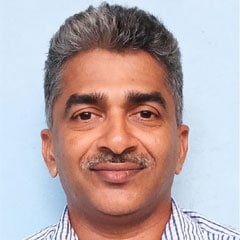What does it take for India to become a developed nation by 2047?

Mail This Article
"Whatever you can rightly say about India, the opposite is also true," said British economist Joan Robinson in the 60s or 70s. And that still rings true decades later. While India is both the fastest-growing large economy and the fourth largest economy in the world, the number of poor people in India is 34.23 crore – which is equal to the population of the United States, which is the third most populous nation after India and China.
There is another paradox here. Nearly one-fourth (23.90 per cent to be exact) of our population is poor when the official measure of poverty is way below our intuitive notions of poverty. For an Indian five-member household to be considered non-poor, it needs to earn only ₹13,016 a month, i.e. ₹434 a day. (The data collected is of consumption expenditure and not income. But at low-income levels, the entire income is assumed to be spent with no savings). India has 28 crore households with an average of five members and with ₹13,016, they can buy the basket of goods and services which will keep them out of poverty.
There is also an even smaller extreme poverty measure to which 5 per cent of Indians belong—a five-member household with a monthly income of ₹9,300. Thus, out of 20 five-person households in India, four earn less than ₹13,016 a month, and one earns less than ₹9,300 a month.
So, should we be proud about being the fourth largest economy or be ashamed and pained at a quarter of Indian households not earning even ₹13,016 per month, which is just 13 per cent of India’s per person national income?
The counterargument would be to look at the decline in poverty rates. Officially, the extreme poverty rate has declined to 5.3 per cent (2022-23) from 27.1 per cent (2011-12), while poverty rates fell to 23.9 per cent from 57.7 per cent in that period.
Is that not an achievement? The Indian economy is like a student who scored 5 out of 100 a decade ago and now scores 20. The four-fold jump is definitely progress, but it is not good enough.
To be fair to all the state and union governments in power over the last 75 years, it is one of the most difficult countries to govern—with around 18 per cent of the global population, a union of states with huge diversity in language, culture, and geography, and a democracy with a multitude of political parties.
Like most de-colonised nations, we started socialist and turned to a market economy later. But this shift was late by around a couple of decades compared to others. Though we achieved food security with the Green Revolution, low economic growth and high population growth did not mean much improvement in the standard of living.
But if 1991 reforms did bring change, why are a quarter of us poor? Economic reforms create an opportunity that has to be grabbed by those prepared. Reforms won’t work on their own; you have to make them work. Southern, western, and some northwestern states were better prepared to leverage reforms in terms of human capital and a positive business climate. States with the highest poverty rates are also the states with the most abysmal governance.
The initial set of reforms was easy. They were not followed up with second—or third-generation reforms. Reforms of land and labour, education, and agriculture are tougher yet highly impactful. Plus, there are governance reforms that are long overdue.
Can India become a developed by 2047?
Our fertility rates are finally at replacement levels, and we also have a huge, young labour force. But skilling them and making them employable – that is something we have not solved. Without a reset in our education system, the labour force will drag the economy. This is compounded by AI, which is cheaper and more efficient than us in many tasks. So far in human history, automation has created more jobs for humans than it replaced. But will it be the same with AI? If the existing paradigm stays, there isn’t much to worry. But what if it doesn’t, what if the paradigm shifts? It is a question we need to fret over.
Then there are the challenges of climate change. We have to make the investments and manage the disruptions needed to transition to a low-carbon economy. We also need to respond to extreme climate events and the losses they create. This can strain state finances and capacity, reducing funds and focus available for other growth-enhancing areas.
If AI and climate change are global issues, we have a domestic issue of recent origin—a Union vs. state battle or a South vs. North battle—that is distracting us from focusing on economic and governance reforms.
Though all nations face AI and climate change challenges, many of them are on a stronger footing of high income, high standards of living, better governance and higher quality human capital, unlike India. Moreover, we are now in a world characterised by VUCA – volatility, uncertainty, complexity and ambiguity. Thus what worked earlier for other nations may not work for us going forward. Hence, India aims to become a developed nation when the cards are stacked against it.
Can we? Despite being in a VUCA world of AI and climate change, we still have a window of at least a decade of relative stability to undertake economic and governance reforms and to think out of the box. But for that to happen, all of our legislators, bureaucrats and leaders must close ranks and display statesmanship; they need to make a covenant for growth and governance. That can make us develop; that alone can make us a developed nation.


